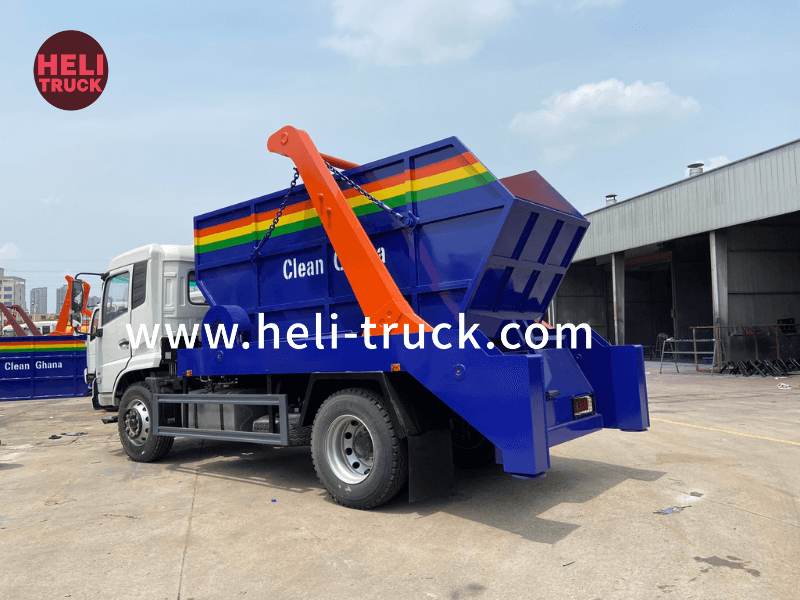Introduction:
Waste management is a pressing global issue that demands innovative solutions to minimize environmental impact and create more sustainable practices. One crucial aspect of efficient waste management is the use of garbage compactor trucks. These vehicles play a significant role in reducing the volume of waste, optimizing collection routes, and improving overall sanitation. In recent years, there has been a growing demand for garbage compactor trucks with high compaction force, as they offer numerous advantages over their conventional counterparts. This article aims to explore the benefits and advancements of garbage compactor trucks with high compaction force, emphasizing their role in revolutionizing waste management.
1. Understanding Garbage Compactor Trucks:
1.1. The Purpose and Function of Garbage Compactor Trucks:
Garbage compactor trucks are specialized vehicles designed to collect, compress, and transport solid waste efficiently. They play a vital role in municipal waste management systems, enabling the handling of large volumes of waste with minimal manual labor. These trucks typically consist of a compaction unit, waste storage area, hydraulic systems, and various safety features.
1.2. Traditional Compaction Force and Limitations:
Traditional garbage compactor trucks employ hydraulic systems to compress waste, reducing its volume and allowing for more efficient collection. However, these systems often have limitations in terms of compaction force, which can impact their effectiveness in waste management. Conventional compaction forces range from 10 to 15 tons, which may not be sufficient for handling certain types of waste or achieving optimal compaction ratios. Fuel tank truck maintenance schedules necessitates the development of garbage compactor trucks with high compaction force.
2. Advancements in Garbage Compactor Trucks:
2.1. High Compaction Force Technology:
Garbage compactor trucks with high compaction force utilize advanced hydraulic systems and mechanisms to exert greater pressure on the waste being compressed. These vehicles are equipped with larger and more powerful compactors, enabling them to achieve compaction forces exceeding 20 tons. This increased force ensures better waste compression, leading to reduced collection frequency, improved efficiency, and cost savings.
2.2. Enhanced Waste Compaction Ratios:
Garbage compactor trucks with high compaction force deliver significantly higher waste compaction ratios compared to traditional trucks. By reducing the volume of waste, these vehicles optimize collection routes and minimize the number of collection trips required. This translates to reduced fuel consumption, decreased emissions, and lower operational costs for waste management authorities.
2.3. Extended Payload Capacity:

Another advantage of garbage compactor trucks with high compaction force is their ability to accommodate larger payloads. The increased compaction force enables more waste to be compressed into the same space, effectively increasing the truck's capacity. This extension of payload capacity allows for more efficient waste collection and transportation, reducing the need for additional trucks and improving overall productivity.
3. Benefits of Garbage Compactor Trucks with High Compaction Force:
3.1. Efficient Waste Management:
Garbage compactor trucks with high compaction force offer improved waste management capabilities, ensuring that more waste can be collected and transported within a given time frame. This efficiency is particularly crucial in densely populated urban areas where waste generation is high. By reducing collection frequency and optimizing routes, these trucks contribute to cleaner streets, reduced traffic congestion, and enhanced sanitation standards.
3.2. Environmental Sustainability:
The use of garbage compactor trucks with high compaction force aligns with environmental sustainability goals. By decreasing the number of collection trips required, these vehicles minimize fuel consumption, resulting in reduced greenhouse gas emissions. Additionally, the higher compaction ratios achieved by these trucks lead to better waste disposal practices, reducing the strain on landfills and promoting resource conservation.
3.3. Cost-Effectiveness:
Garbage compactor trucks with high compaction force offer significant cost savings for waste management authorities. The extended payload capacity and improved compaction ratios translate to reduced labor, fuel, and maintenance costs. Moreover, the optimized collection routes result in lower operational expenses, making these trucks a financially viable investment in the long run.
4. Case Studies:
4.1. Tokyo, Japan:
The Tokyo Metropolitan Government has implemented garbage compactor trucks with high compaction force to manage the city's waste effectively. By utilizing these advanced vehicles, the government has achieved substantial cost savings and improved waste collection efficiency. The increased compaction force has enabled Tokyo's waste management system to handle larger volumes of waste, contributing to a cleaner and more sustainable city.
4.2. New York City, United States:
New York City's Department of Sanitation (DSNY) has also embraced garbage compactor trucks with high compaction force. By incorporating these vehicles into their fleet, the DSNY has reduced collection frequency, minimized fuel consumption, and improved overall operational efficiency. The trucks' ability to accommodate larger payloads has significantly optimized waste collection efforts, resulting in substantial savings for the city.
5. Conclusion:
Garbage compactor trucks with high compaction force have emerged as a game-changer in waste management. Their advanced hydraulic systems and enhanced compaction capabilities offer numerous benefits, including efficient waste management, environmental sustainability, and cost-effectiveness. As waste generation continues to increase globally, the adoption of these advanced vehicles becomes increasingly crucial. By revolutionizing waste management practices, garbage compactor trucks with high compaction force pave the way for a cleaner, greener, and more sustainable future.
